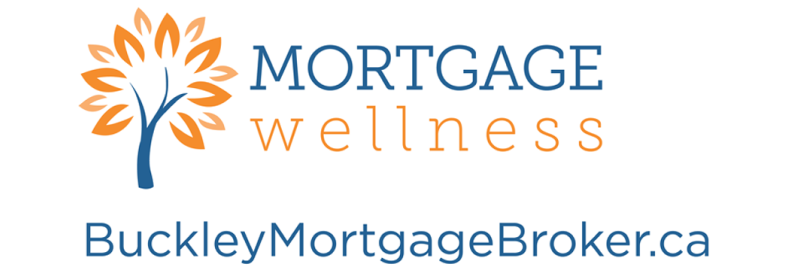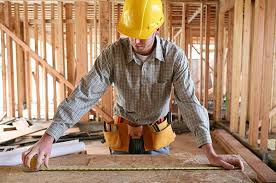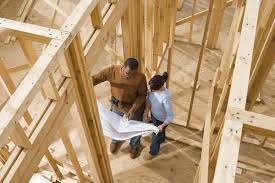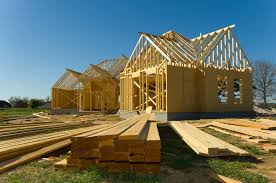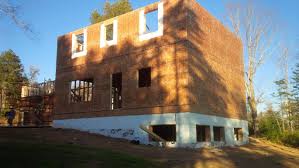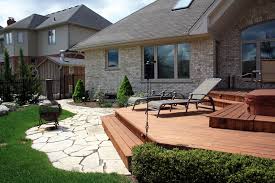Why try to buy your dream home when you can build it yourself with the help of an Experienced Home Builder, Quality Architect, and Knowledgeable Mortgage Broker? Whether in Wasaga Beach, Collingwood or Thornbury, building your own home is possible with residential construction financing, however there is much to understand before you jump in and start construction.
possible with residential construction financing, however there is much to understand before you jump in and start construction.
Many prospective homebuyers are turning to building their own home to avoid overpaying for their dream home. There are circumstances in which building your own home can be a remarkable success. Some find it stressful; however, most enjoy the pleasure of being involved in the process. Therefore, it is imperative that homebuyers understand the process of completing a residential construction project.
If you need construction financing, it is extremely important to consult a mortgage professional prior to venturing out on your own to build a house.
Types of Construction
- Residential (Urban and Rural)
- Land Development
- Renovations
The Building Process
At a high-level, the building process looks like the following: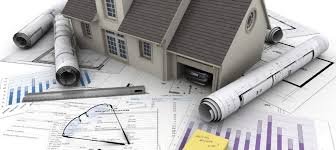
- Discuss construction plans and financing options with a construction mortgage professional that is going to be your partner every step of the way
- Arrange financing with a lender who understands construction.
- Hire an architect and builder to draw up plans and prepare to apply for permits for the new build
- With the help of a builder’s estimates and a mortgage professional’s advice, draw up a realistic budget and timeline for the necessary financing draws
- Oversee the build to completion
- Look to refinance your construction mortgage into a traditional home mortgage with a new (typically lower) interest rate
When budgeting for your new home build, the first major expense to consider is the physical land upon which the home will be built, which in certain circumstances can be factored into the total mortgage. The rest of the costs can be broken down into hard costs (raw materials and labor), soft costs (engineering, permit and architecture fees), and allowances (flooring, backsplash, décor).
These costs are the most visible, however there are other costs and dollar figures to be aware of. Budgeting a home build is not always perfectly accurate and unforeseen expenses can happen along the way. Preparing for this with a contingency reserve is usually best, as anything not spent can be put into the down payment at the beginning of the mortgage period. Typically, 10 to 15% of construction costs should be the amount of your contingency reserve.
Any lot equity, which is the difference in value of the loan on the land and the land’s appraised value, will be applied towards the down payment.
Phases of Construction
After you have purchased a serviced building lot the following are the phases that builders follow:
- Excavation
- Foundation
- Framing
- Windows and Doors
- Mechanical and Electrical
- Interior walls and stairs
- Garage
- Exterior finish (house wrap)
- Insulation and drywall
- Plumbing
- Fireplaces
- Exterior finish (siding)
- Lighting
- Cabinetry
- Flooring appliances
- Decks and patios
- Kitchen island and trim
- Landscaping
The Financing Process
From the building process, the financing process can also be broken down into a series of simple steps: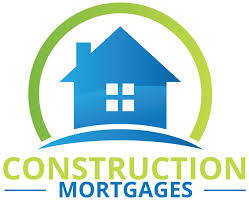
- Get a copy of the architectural drawings, and plan out the interior and exterior design characteristics of your home and get detailed construction estimates before you hire your contractor
- Give this information to an appraiser who will estimate a value of the home
- Using the lesser of your contractor’s construction cost estimates and an appraiser’s valuation, apply for up to 80% of the construction value in a mortgage. Some lenders may only finance 65% of the estimated value of the build and 75% of land value, others will go higher.
- If you are self-employed, provide your mortgage professional with income verification and your company’s financial statements for the past two years
- Draw a certain percentage of the funding at each level of completion, which will be pre-determined by your lender
- At the end of the build, receive any outstanding balance on the mortgage
- Consult with your mortgage professional and convert the outstanding debt left owing on the construction loan into a traditional mortgage loan for (typically) a lower interest rate
The Draw Process
- Draws typically happen every 30 to 45 days
- Prior to draws, an appraiser, municipal building inspector or architect will perform an inspection
- Draws are based on project completion status (%)
When you hire your contractor, they will give you a completion schedule as well that should be similar to the draw schedule you receive through your progress draws on mortgage less a hold back that is held by the solicitor that is defined by your provincial Construction Liens Act. Look for lenders with flexible draw schedules as this will ensure you receive monies on time to pay contractors.
Beware that construction financing is based on the lesser of the market value of the home and the construction costs. If the cost of the build exceeds the home’s estimated market value, you may not be able cover the entire home construction with a mortgage alone and may need upfront cash.
Note that interest rates for construction loans will be higher than traditional mortgages, however the rate will lower once the outstanding construction loan is factored into the home’s conventional mortgage.
Final Considerations
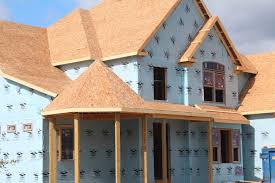 Many homebuyers will choose to build their own home as it allows them to craft their dream home according to their exact desires, while remaining in their specific budget.
Many homebuyers will choose to build their own home as it allows them to craft their dream home according to their exact desires, while remaining in their specific budget.
Buying a home is great if you want to avoid the hassle of the building process and hiring contractors. However, prospective homebuyers should keep in mind that there can be hidden issues that cause trouble down the road, such as worn roof shingles or faulty appliances that will cost you time and money to fix. Building your own home ensures the appliances and home structure are new.
Raising the right financing can be difficult, and if done incorrectly, can cause you serious financial hardship.
For a deeper look at Construction Mortgages, visit our blog at www.GerardBuckley.ca
Gerard Buckley, @jaguarmortgages, Mortgage Agent at Mortgage Wellness, has offices is in Collingwood, Owen Sound and Toronto and has access to over 70 specialized lenders.
Please Call Gerard at 705-532-1182 for a complementary consultation.

